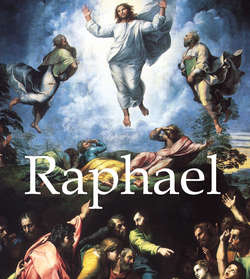Читать книгу Raphael - Eugène Müntz - Страница 5
На сайте Литреса книга снята с продажи.
Raphael Travels to Siena – The Vision of a Knight
ОглавлениеThe period between the years 1504 and 1508 is surely the most agitated in the life of Raphael. He was by turns in Perugia, Città di Castello, Siena, Urbino, Florence, perhaps also in Bologna, then once more in Perugia and Urbino, although it is impossible to establish with certainty the respective dates of these different journeys.
Saint George and the Dragon, known as The Small Saint George
1505
Oil on wood, 31 × 27 cm
Musée du Louvre, Paris
At times, as in Urbino, the young master took part in all the entertainments of a cultured and brilliant court; at others, as in his new peregrinations across Umbria, he was hard at work. In one place he left behind a masterpiece, and in another he established fast friendships. Looking at his style or choice of subject matter, one is struck by their diversity; religious history and secular history, portraits, easel painting and monumental frescos – there is nothing at which he did not try his hand.
Eight Nude Men besieging Perugia
1505
Pen, brown ink, stylus, 26.6 × 40.6 cm
Musée du Louvre, Paris
He was interested in and influenced by Signorelli, Leonardo da Vinci, Frà Bartolommeo, and Masaccio almost simultaneously; then he abruptly reverted to the Perugino manner. More than once the observer feels completely disoriented, and yet, through all of these apparent contradictions, Raphael continued to grow and advance.
It is this period, in all probability, that produced the charming little painting, now in the National Gallery in London, The Vision of a Knight. It is the first time that we see Raphael portraying a secular subject, and he does so with a charm and loftiness fit to discourage even the most eminent master.
Warrior on Horseback with a Shield
1505
Pen and ink, 25.7 × 21 cm
Galleria dell’Accademia, Venice
Through a stroke of genius, the young master, leaving mythology aside, sought his inspiration in a less distant, more real, tradition. He called upon these centuries so rich in poetry, these Middle Ages which Pulci and Boiardo had made interesting; he chose to evoke that knighthood whose noble aspirations and high exploits could rival those of classical heroes. The form of a dream, a vision, which he gives to the scene further adds, if such is possible, to the delicacy and depth of the artist’s conception.
Standard Bearer
1505
Pen and ink, 25.7 × 21 cm
Galleria dell’Accademia, Venice
